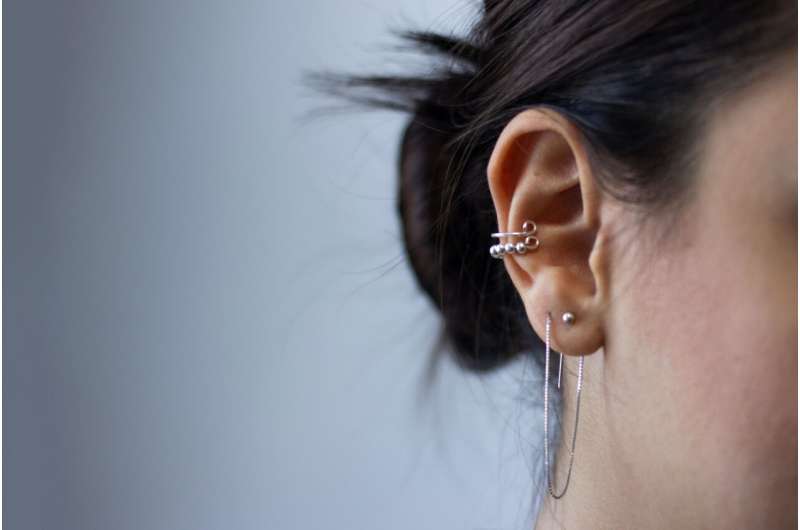This article has been reviewed according to Science X's editorial process and policies. Editors have highlighted the following attributes while ensuring the content's credibility:
fact-checked
trusted source
proofread
Study finds ear shape is as accurate as fingerprints for identification

International researchers have compared the external ears of more than 1,400 people of multiple nationalities and found that the ear is as good an identifier of an individual as a fingerprint or DNA, and can even distinguish between identical twins.
The international research team behind the study, published in the journal, Morphologie, includes Dr. Sudheer Babu Balla, from La Trobe University's School of Rural Health in Bendigo, who analyzed data from India.
According to Dr. Balla, the distinctive shape and size of the ears are useful not only for the identification of the deceased but also for the recognition of the living—such as crime suspects and victims.
"The external human ear is particularly distinct for an individual—having both morphological features from the genetic origin, but also distinctive features acquired through life, such as in sports' players, say rugby players," Dr. Balla said.
Techniques to assess the external human ear date back to the 1940s. In 2011, a more precise technique called Cameriere's ear identification method was developed which relies on measurements and ratios of different parts of the outside ear such as helix, antihelix, concha, and lobe.
This study is the first to attempt to validate the method across a number of ethnic groups from six different countries (Brazil, India, Japan, Russia, South Africa and Turkey) using a sample of 2,225 photographs of the external human ear (1,134 left and 1,091 right ears) from 1,411 individuals (633 females and 778 males).
The study found that there is a low probability (< 0.0007) of finding two individuals with the exact same code as assessed by Cameriere's ear identification method.
"In this study, we demonstrated that the human ear may be a powerful tool to distinguish not only people in a random population but also genetically identical twins," Dr. Balla said.
"It may also mean that analysis of human ears could be used as an alternative to facial recognition systems."
A dentist, Dr. Balla worked as a forensic expert in India and conducted forensic age assessments in juvenile delinquents and migrant children. He researched expansively in the context of dental age estimation mainly to find suitable methods for better discrimination of children and adolescents who disputed the law.
More information: N. Angelakopoulos et al, Ear identification: A multi-ethnic study sample, Morphologie (2023). DOI: 10.1016/j.morpho.2023.05.001
Provided by La Trobe University




















